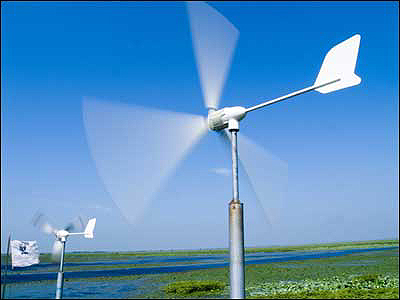| Tools: Save | Print | E-mail | Most Read |
| China Takes Steps to Cut CO2 Emissions |
| Adjust font size: |
China has taken active steps to cut carbon dioxide (CO2) emissions, according to a climate change expert. Xu Huaqing, director of the Energy Research Institute at the National Development and Reform Commission, made the comments in an interview on Thursday.
A recent report from the International Energy Agency (IEA) said by 2009 China would surpass the US to be the top CO2 emitter. The previous forecast predicted this would happen in 2020. "It is not surprising given China's growing dependence on coal consumption, driven by rapid economic growth over the past years," Xu said. The IEA conclusion was based on two assumptions that by 2009 CO2 emissions from burning fossil fuels in the US would hold steady and that China's energy consumption structure would not change dramatically before then. China is expected to consume the equivalent of 2.5 billion tons of coal in 2009, which will release about 5.8 billion tons of CO2 under the current calculation of CO2 emission per unit of primary energy. The CO2 emissions will be equivalent to the amount the US released in 2004, Xu said. With a population five times that of the US, China has a per-capita CO2 emission that is much lower than those of developed countries. But with its CO2 emissions continuing to increase, China will face great pressure from the international community to make a commitment to reduce emissions. "Who will become No.1 and when are not the biggest concern here," said Zhang Jianyu, a visiting scholar at Tsinghua University. "What's rather alarming is that neither country has set a firm cap on their emissions. Both countries are large emitters and must do something." Although China has not set a firm cap and a clear target on CO2 emissions, it has put in place a series of measures to help mitigate worldwide climate change. From 1990 to 2005, China's energy consumption per 10,000 yuan (US$1,271) of gross domestic product (GDP) went down from 2.68 tons of coal equivalent to 1.43 tons. An accumulated 800 million tons of coal equivalent were reduced by economic structure adjustment and energy efficiency promotion. Based on the emissions ratio of 2.3 tons of CO2 released from 1 ton of standard coal in 1994, it means China cut 1.8 billion tons of CO2 emissions. Last year, the use of renewable energy including hydroelectricity in China was equal to 166 million tons of coal equivalent, accounting for 7.5 percent of China's total energy consumption. That equals 380 million tons of CO2 emissions saved, Xu said. China has also taken an active role in the Clean Development Mechanism under the Kyoto Protocol to reduce CO2 emissions with the cooperation of industrialized countries. Environmental officials from around the world began meeting on Monday in Nairobi, Kenya to discuss a new agreement after the Kyoto Protocol. The forum on global warming continues until next Friday. (China Daily November 11, 2006) |
| Tools: Save | Print | E-mail | Most Read |
 |
| Related Stories |
|
|
Product Directory China Search |
Country Search Hot Buys |
